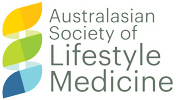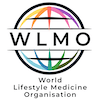
Keeping eyes in focus: A Lifestyle Medicine approach to eye health maintenance
Lifestyle Medicine is concerned with preventing, treating and reversing lifestyle-related diseases through nutrition, physical activity, sleep, mental wellbeing and the avoidance of risky substances1. When we think about lifestyle-related diseases, usually the big killers such as heart disease, cancer and diabetes come to mind. However, from the perspectives of our patients, these diseases are often invisible, internal conditions, with the impact on health seemingly more of a nuisance until a significant event related to the disease occurs. Eye health, on the other hand, is a more treasured commodity according to research.
A national survey of US adults showed that the vast majority prized good vision and almost half considered the potential of losing their vision the worst possible disease occurrence. Yet about a quarter had no idea about common eye diseases and their prevention2. Talking to our patients about eye health may encourage healthy lifestyle behaviour change to care for their eyes. Research shows that what is good for the eyes is also good for the heart and other chronic diseases2. So, what are the most common diseases and reasons for blindness, and how do we protect our vision?
Most common causes of blindness and eye diseases
In recent centuries, the most common cause of blindness was small pox infection. The development of vaccination eventually eliminated small pox, and later, in the 19th century, the most common cause of blindness became venereal disease infection in infancy. Topical treatment, which remained the mainstay of neonatal practice until recently, markedly reduced this risk of blindness. At the start of the 20th century, insulin was discovered. This increased the lifespan of those with diabetes, and therefore diabetic retinopathy was identified as an increasing cause of blindness. The overall increase in average lifespan in the 20th century also contributed to cataracts being a significant cause of blindness until effective surgery became available.3 Sadly, in developing countries, lack of access to cataract surgery and Trachoma eye disease still accounts for most blindness3.
As these conditions are presently managed more effectively, the leading cause of blindness in the developed world is now age-related macular degeneration (AMD). In New Zealand, this contributes to about 50% of blindness4. In real figures, this constitutes 400-500 new cases of blindness in New Zealand per year5. AMD is a progressive disease characterized by lipid deposits called drusen forming in the retinal pigment areas. It affects central vision and inhibits visual acuity/reading ability. The greatest non-modifiable risk factors are being 50+ years and genetics. Those who have a family history of AMD are at 6x more risk of developing the disease.
How lifestyle can improve and protect eye health
Lifestyle risk factors associated with the development of AMD are smoking (which puts an individual at almost twice the risk), diabetes, UV light exposure, and a diet low in omega-3s, fruit and vegetables5. American Heart Association’s prescription for health, called the Life’s Simple 7 (LS7) metrics, consist of information on smoking, physical activity, body mass index, diet, blood pressure, total cholesterol, and blood glucose. Using data gathered from National Health and Nutrition Examination Survey (NHANES), participants who were calculated to have higher (meaning “healthier) LS7 scores were associated with lower odds of the eye diseases AMD, diabetic retinopathy, glaucoma and cataract6.
Specific dietary factors associated with AMD have been further elucidated. The carotenoid antioxidants, Lutein and Zeaxanthin, are found in the retina and lens of the eye and help absorb high energy blue and ultraviolet light. A typical Western diet is usually low in these carotenoids, which are found in dark leafy green vegetables, berries and grapes, legumes, bell peppers, egg yolk and corn. Increasing intake of these food groups can reduce progression to advanced AMD5,7. The addition of supplements with these compounds is generally advised for individuals with intermediate to late AMD.4 Supplementation with β-Carotene is not recommended due to the observed risk of lung cancer in smokers and non-smokers5.
Recent research also supports the role of dietary Omega-3 Essential Fatty Acids consumption as a preventative strategy for AMD8. The Meta-Analysis showed a clear inverse relationship with a strong dose response with fish consumption and other dietary sources of Essential Fatty Acids8.
Protecting eye health wouldn’t be complete without attention drawn to ocular injuries. Recorded eye injuries by medical practitioners are greater than 1000 cases/100 000 population in New Zealand. The most common mechanism of injury is the eye being struck by an object and in only 6% of cases were safety glasses worn9. It is recommended that any activities that may involve flying objects, splashes, dust or radiation (e.g. DIY projects, gardening, welding or commercial activities) involve appropriate protective eye wear10.
In summary
Eye sight is a precious health asset and one to not take for granted. Encouraging healthy lifestyle change to preserve vision may resonate with many of our patients. Undertaking regular optician examinations in our later years, adopting the following lifestyle measures such as: smoking cessation, avoidance of UV light exposure, wearing eye protection for risky activities. and the daily consumption of five plus serves of fruit, green vegetables, legumes with a regular source of Omega 3 essential fatty acids such as fish will lead to optimal visual perception for later years.
- Lianov, L., Johnson M.: Physician Competencies For Prescribing Lifestyle Medicine. JAMA 2010. 304(2): P 202-3
- A healthy lifestyle for cardiovascular health also promotes good eye health. ScienceDaily. ScienceDaily, 20 August 2020. www.sciencedaily.com/releases/2020/08/200820112842.htm.
- Taylor HR, Keeffe JE World blindness: a 21st century perspective British Journal of Ophthalmology 2001;85:261-266.
- https://www.researchreview.co.nz/nz/clinical-area/general-medicine/general-practice/speaker-series-macular-degeneration-and-diabetic.aspx
- https://bpac.org.nz/bpj/2015/september/macular-degeneration.aspx
- De La Cruz N, Shabaneh O, Appiah D. The Association of Ideal Cardiovascular Health and Ocular Diseases Among US Adults. Am J Med. 2021;134(2):252-259.e1. doi:10.1016/j.amjmed.2020.06.004
- Ma L, Dou HL, Wu YQ, et al. Lutein and zeaxanthin intake and the risk of age-related macular degeneration: a systematic review and meta-analysis. Br J Nutr. 2012;107(3):350-359. doi:10.1017/S00071145110042607.
- Jiang H, Shi X, Fan Y, et al. Dietary omega-3 polyunsaturated fatty acids and fish intake and risk of age-related macular degeneration.Clin Nutr. 2021;40(12):5662-5673. doi:10.1016/j.clnu.2021.10.005
- Wallace H, Fergusson R, Snug J, et al.New Zealand adult ocular trauma study: A 10-year national review of 332 418 cases of ocular injury in adults aged 18 to 99 years. Clinical and Experimental Ophthalmology 2021 48(2) P158-168 https://onlinelibrary.wiley.com/doi/10.1111/ceo.13667
- https://www.sitesafe.org.nz/guides–resources/practical-safety-advice/eye-safety/
This article has been written for the Australasian Society of Lifestyle Medicine (ASLM) by the documented original author. The views and opinions expressed in this article are solely those of the original author and do not necessarily represent the views and opinions of the ASLM or its Board.



